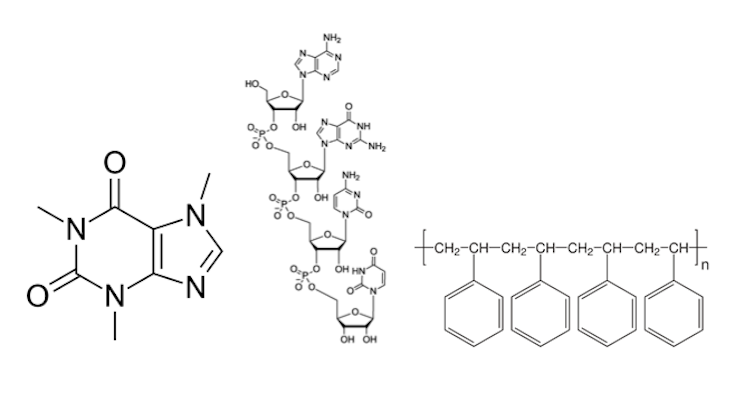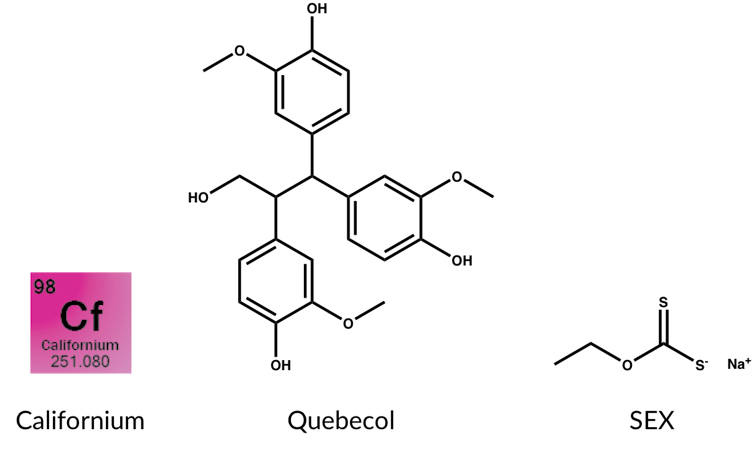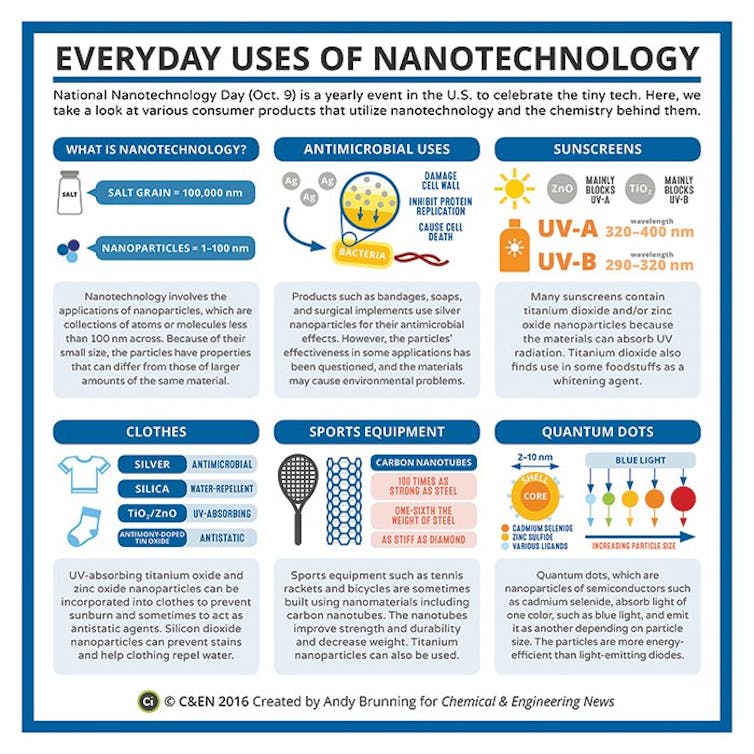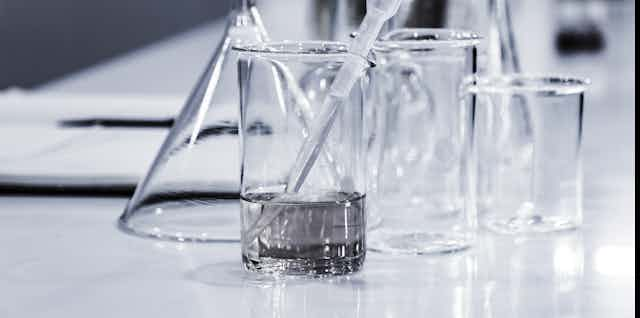When I introduce myself as a PhD student in chemistry, I can often spot fear and incomprehension in people’s eyes: chemists are often pictured as crazy scientists, like Dr. Maru in Wonder Woman, doing black magic and explosions. It appears that most of the public fears are based on misunderstandings of the science.
And so I’d like to address five of the most common misconceptions about chemistry, and hopefully explain how chemistry contributes to everyday life.
The word chemical can be considered a synonym of matter; a chemical is anything that has mass. This includes everyday substances like water, caffeine and sugar. Elements featured on the periodic table are chemicals, and so are small molecules like caffeine, large molecules such as deoxyribonucleic acid (DNA) and almost-infinite chains called polymers, such as plastics.

Misconception #1: Chemical-free products are safer
Elements are the building blocks that create the world surrounding us. Whether they are naturally occurring or man-made, chemicals are everywhere. Chemical-free products do not exist: anything you can touch is matter, and is therefore a chemical. Products advertised as “chemical-free” may suggest that they are free of dangerous chemicals, yet companies take advantage of people’s fear of chemistry for their commercials - which lead to increased consumer suspicions.
The Nue Co. storefront in NYC
Misconception #2: If you can’t pronounce it, it’s bad for you
Chemical names often sound terrifying and give the impression that they are not safe. The names of chemicals does not relate to how hazardous they are or to their origin. Have you ever consumed acetyl salicylic acid or sodium hydrogen carbonate? You might have if you’ve taken aspirin or eaten anything that required baking soda to prepare.
Sometimes common names are used for chemicals. Dihydrogen monoxide (H₂O) is shortened into water, 1,3,7-Trimethylxanthine sounds complicated, but it is more colloquially known as caffeine. Chemists sometimes display a keen sense of humour when naming elements and molecules …

Misconception #3: Organic products > synthetic
Did you know that chemists can produce natural products synthetically in their lab? Did you know that gasoline, from a chemistry standpoint, is an organic substance?
In 1789, the French chemist Antoine Laurent Lavoisier wrote in Traité élémentaire de chimie that “nothing is lost, nothing is created, everything is transformed.” To invent new chemicals, chemists have to transform existing ones. Chemists always use naturally sourced materials as starting materials for new molecules. Chemicals produced in laboratories can find their origins in nature (petroleum, wood, etc.) and are often organic since they contain mostly hydrogen, carbon and oxygen atoms.
Danger is intrinsic to each chemical and it is the “dose that makes the poison.” Which means there’s no need to be afraid of the small amounts of cyanide naturally present in apples, and a charred BBQ will not cause you cancer. However, drinking up to six litres of water or 175 shots of espresso could be fatal.
Synthetic products created in laboratories are not necessarily more or less hazardous than chemicals found in nature. Whether it is an innovative artificial molecule or a man-made naturally occurring product, the danger depends on their structure, but not their origin. There are also a lot of naturally occurring poisons produced by plants and animals. Still, chemists spend most of their time designing new molecules that society and the environment can benefit from — whether it’s new molecules for drugs or new batteries for electric cars.
Misconception #4: Nanoparticles are harmless
Nanoparticles are small groups of atoms between from 1 to 100 nm (1/10,000 the width of a human hair), found in many everyday products. They are so small that they are invisible to the human eye, but they are not invisible to ecosystems. Indeed, nanoparticles are now known to be toxic for aquatic life.
Because we cannot notice their presence in our environment, we often don’t realize the large quantity of nanoparticles surrounding us, and we neglect their impact.
Nanoparticles, plastic or metallic, are present in many personal care products such as toothpastes, skin scrubs and sun creams. They are mostly used for sun protection, antimicrobial agents and as additives and colourings.
Unfortunately, water treatment plants cannot filter them out so they end up in streams, lakes and oceans and, ultimately, as food for marine life, moving up the food chain and eventually ending up on your dinner plate.
The chemical industry has started to reduce the number of products containing nanoparticles, but many paints and sunscreens are still potential sources of contamination. And yet nanoparticles have appeared as promising venues for medicine and the treatment of cancer, for example.

Misconception #5: Chemists are evil
Chemists have a responsibility to the public regarding the development of products harmful for the environment and human health. Chemists have made great progress in developing cleaner and more eco-friendly products. However, industry and consumers have been slow to adopt these greener alternatives, unless they are cheaper and at least as efficient.
Some days, we chemists wish we were magicians, able to create solutions out of thin air. But we will continue to make progress through innovative research, creating new products and encouraging greener alternatives to old habits. Chemistry is a powerful and innovative tool, yet it has to be used wisely.
For chemists, the glass is always full. Partly with a liquid, and the rest with air — nitrogen N₂, oxygen 0₂, Argon Ar, carbon dioxide CO₂, etc. Chemistry produces fantastic discoveries that increase our quality of life, and there is so much yet to be discovered.


